If you spend more than 20 minutes on a gallery crawl in Tribeca, Bloomsbury, or Kreuzberg, you’re likely to overhear someone talking in hushed tones about the worrying state of the art market.
But such doom-and-gloom threatens to overshadow another equally relevant truth: The past five years have seen a flourishing new crop of ambitious galleries taking root in cities around the globe. The pandemic ushered in a wave of experimentation, of why-not-now, that has enriched the art world tremendously. Some arts workers moved back to their hometowns and decided to take advantage of lower rents to open their first galleries; others haggled, bartered, scrimped, and saved in order to afford a space in more established commercial art hubs.
Young dealers play an essential role in the art ecosystem, scouting artists who often have not yet developed steady markets and building careers from the ground up. In many ways, the entire rest of the market hinges on their willingness to take risks.
To select the group of gallerists comprising CULTURED’s first Young Dealers List, we reached out to more than 40 collectors, advisors, and curators to find out where they look to discover new talent. From over 100 recommendations, we narrowed our first edition to 23 galleries, all younger than five years old. They represent a broad (although in no way exhaustive) range of geographies, a distinct point of view, and a shared commitment to elevate artists they believe in.
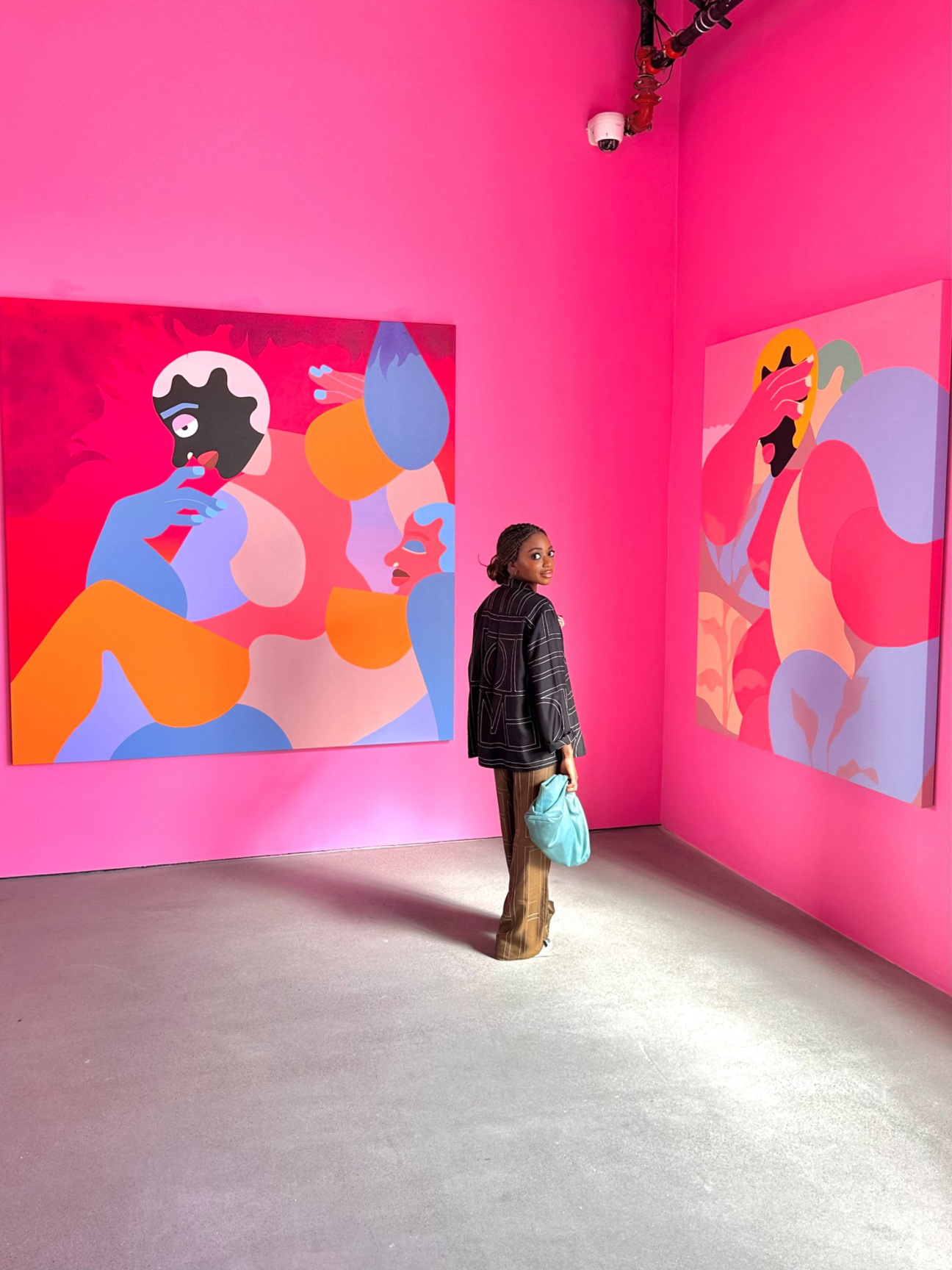
ADA \ Contemporary Art Gallery
Founder: Adora Mba
Founded: 2020
Location: Accra
Adora Mba comes from a line of collectors, but it wasn’t until she began interviewing African artists and dealers while working as a cultural news producer for London’s ARISE News Network that she felt a twinge of desire to open a gallery of her own. After traveling extensively between her home in London and artists’ studios in Ghana, Nigeria, and South Africa, she opted to put down roots in Accra, which she felt had the least robust cultural infrastructure but just as many promising artists who deserved investment and support. Since then, “Accra’s art scene has grown remarkably—it’s been incredible to witness,” Mba says.
With an emphasis on cultivating emerging talent, ADA \ has presented early shows of artists including Zandile Tshabalala and Eniwaye Oluwaseyi, both of whom were included in the celebrated traveling exhibition “Now They See Us,” organized by the late curator Koyo Kouoh. As the only female-led global commercial art space in Ghana, Mba has chosen to dedicate her entire 2025 program to the work of women artists and curators. –Julia Halperin
What past show or project do you feel best illustrates your point of view as a dealer?
Our partnership with UTA Artist Space in Los Angeles was a significant milestone. Bringing 17 artists from across the continent—each with a unique point of view—to LA was an emotional and powerful experience. I love witnessing the surprise and admiration people express when they encounter the caliber of artistry coming from Africa. While it’s a bit of a shame that this level of talent still surprises some, there’s been a certain joy in challenging perceptions and exceeding expectations.
If you could stage a show with any two artists, dead or alive, who would you pick?
Francis Bacon and Danielle Mckinney. I’ve always been fascinated by the distortion and bold use of color in Bacon’s weird and wonderful works. As for Mckinney, I feel as though she paints me at my most vulnerable—every piece resonates deeply. I see myself in her work… cigarette in hand and all, haha.
What keeps you up at night?
“Failing”—whether it’s the business, my team, or slow sales. It can feel especially heavy during quiet periods. It’s a lonely role at times, and the lack of support on this side of the globe can be overwhelmingly difficult to navigate.
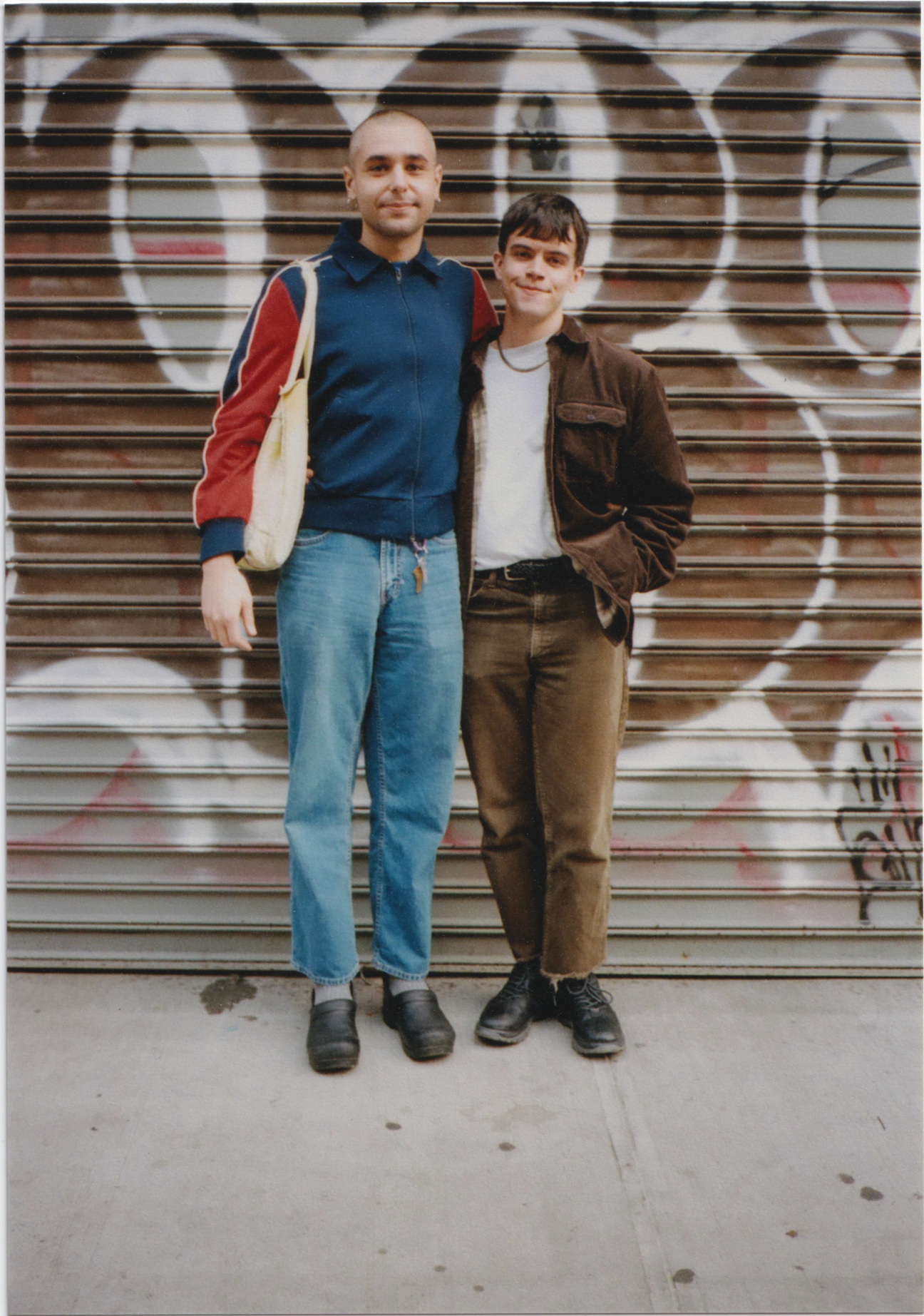
April April
Founders: Patrick Bova and Lucas Regazzi
Founded: 2021
Location: Pittsburgh
For Patrick Bova and Lucas Regazzi, relocating their gallery—which first operated out of their living room in Brooklyn—to Pittsburgh this year wasn’t just a practical move. It also made more sense for the type of art they like. “The work that we’re interested in is on the quieter end,” said Bova. Their multidisciplinary roster, ranging from painters to poets, benefit from the time, space, and, yes, quiet the new digs provide. The partners are capitalizing on their new locale, making unlikely connections with a more regionally diverse swath of artists. –Melissa Smith
What past show or project do you feel best illustrates your point of view as a dealer?
We find a sweet spot with three-artist shows, like our current exhibition “Open Door to the Sun” (Faye HeavyShield, Zoe Koke, and Dionne Lee) and “Muffler” (Kai Jenrette, Cyrilla Mozenter, and Irene Avaalaaqiaq Tiktaalaaq), which we staged last fall. The same goes for smaller group exhibitions, like “a broad private wink” (hosted by Nicelle Beauchene in 2023). They all, we hope, demonstrate our interest in art as an essentially obscure form of knowledge.
What’s the craziest thing you’ve ever done to save money for your business?
We’re driving a lot to save on shipping—to artists, to fairs, to clients.
If you could stage a show with any two artists, dead or alive, who would you pick?
Annie Pootoogook and Horace Pippin are two artists whose work we look to often.

Brunette Coleman
Founders: Ted Targett and Anna Eaves
Founded: 2023
Location: London
On the border between Bloomsbury and Clerkenwell, one can find a flagbearer of London’s thriving young gallery scene. Brunette Coleman was founded in 2023 by artists-turned-dealers Ted Targett and Anna Eaves, who met working together at the London gallery Union Pacific. The gallery focuses on merging practitioners who have no profile in London, often presenting their first exhibitions in the U.K. It gained early recognition for the success of “The Artificial Silk Girl,” a group show of nine emerging women artists working in textiles and other materials. But it was their participation in Frieze London in October 2024 that made headlines: A solo booth of work by the emerging artist Nat Faulkner, who graduated from Central Saint Martins in 2017, won the Camden Art Centre Emerging Artist Prize—which comes with a solo exhibition for the winning artist at the space in 2026. –Tom Seymour
What makes your gallery and program unique?
The gallery is hidden away on the second floor of a Georgian building in Bloomsbury. We didn’t change much when we moved in, wanting to keep as much of the character as possible. The original paintwork and period features make the space feel uniquely London.
What is one thing you wish you knew before opening your gallery?
The art world is as relentless as it is rewarding!
What keeps you up at night?
Shipping logistics and the news cycle.
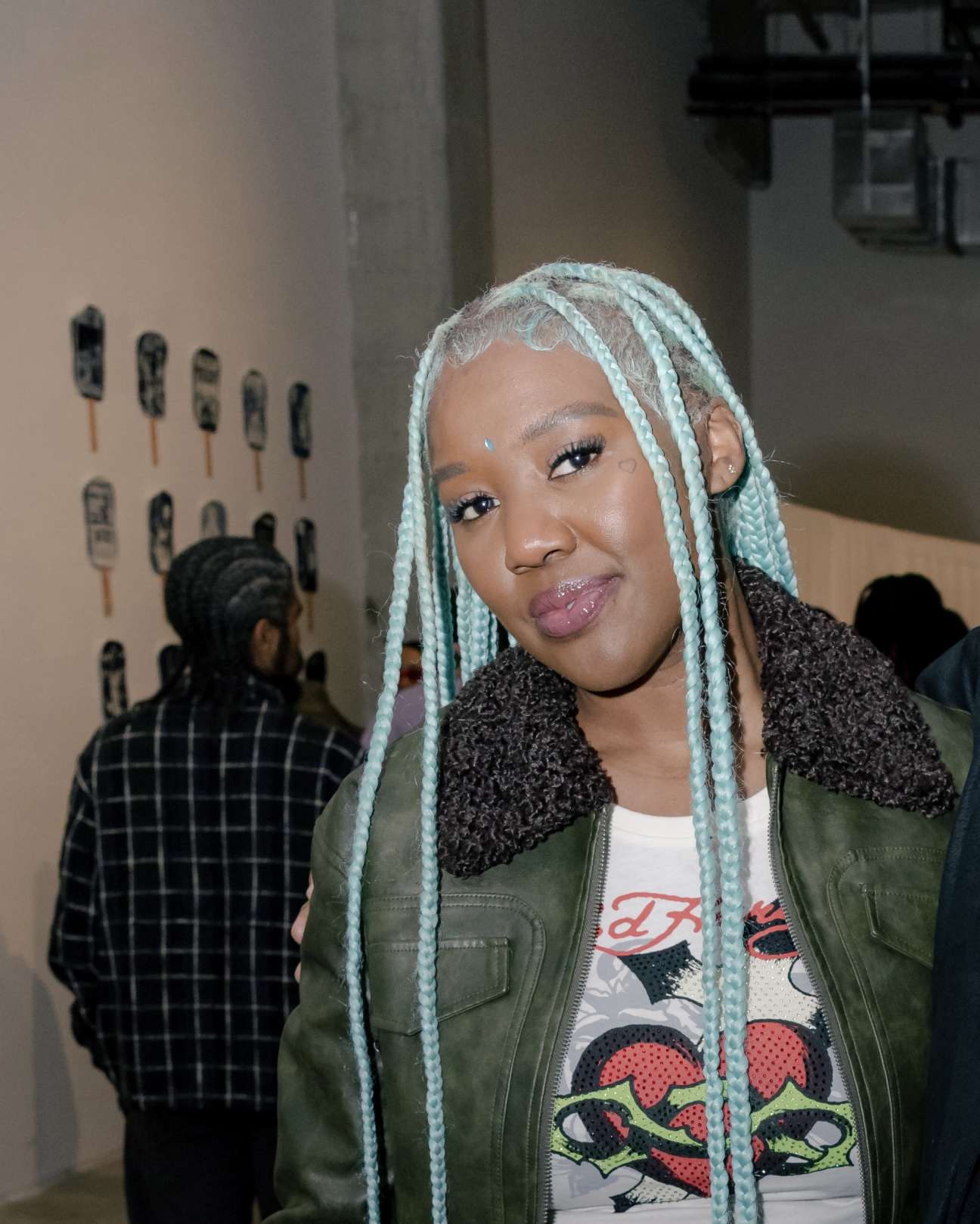
Chela Mitchell Gallery
Founder: Chela Mitchell
Founded: 2021
Location: Washington, DC
“We’re not here to showcase the usual suspects,” says Chela Mitchell. Like a number of other dealers on this list, Mitchell returned to her hometown during the pandemic and decided to make the leap to open her own gallery. Having worked as a fashion stylist before accruing a client base as an art advisor, she opened a storefront in Washington, DC’s Union Market District two years ago. Since then, she’s worked to turn the space into both a showcase of emerging local talent and a community hub. “We host a bi-weekly BIPOC art therapy session led by Imani Shanklin Roberts, and I’ve just launched a series for new and aspiring collectors that demystifies the process of building a collection,” she says. In 2023, hers became the first DC gallery to participate in Frieze Los Angeles with a dual booth featuring Mojdeh Rezaeipour and Larry W. Cook. “I’ll never forget collector Marty Eisenberg looking me in the eye and saying, ‘You have a great eye for art,’” Mitchell says. “That moment stuck.” –Julia Halperin
What is one thing you wish you knew before you opened your gallery?
How expensive it really is. For my very first show, the frames alone cost $17,000—and that was just the beginning. I’ve never had investors, so everything I’ve built has been self-funded. I’m proud of that, but I also wish more people understood the financial realities behind the scenes. Support your local galleries—they need it more than you think.
What keeps you up at night?
Art shipping. Hands down. It’s the most stressful part of my job—timelines, condition reports, customs… It’s a high-stakes puzzle every single time.
What do you want to see more of in the art world? What do you want to see less of?
I’d love to see more economic and cultural diversity on museum boards. Institutions would benefit from fresh perspectives that aren’t tied to wealth or legacy. You don’t need to come from money to know how to fundraise—or to recognize the importance of supporting artists at pivotal points in their careers. I also want to see more museum acquisitions from emerging galleries. That kind of support makes a huge difference. What I’d like to see less of? The cliques and elitism.
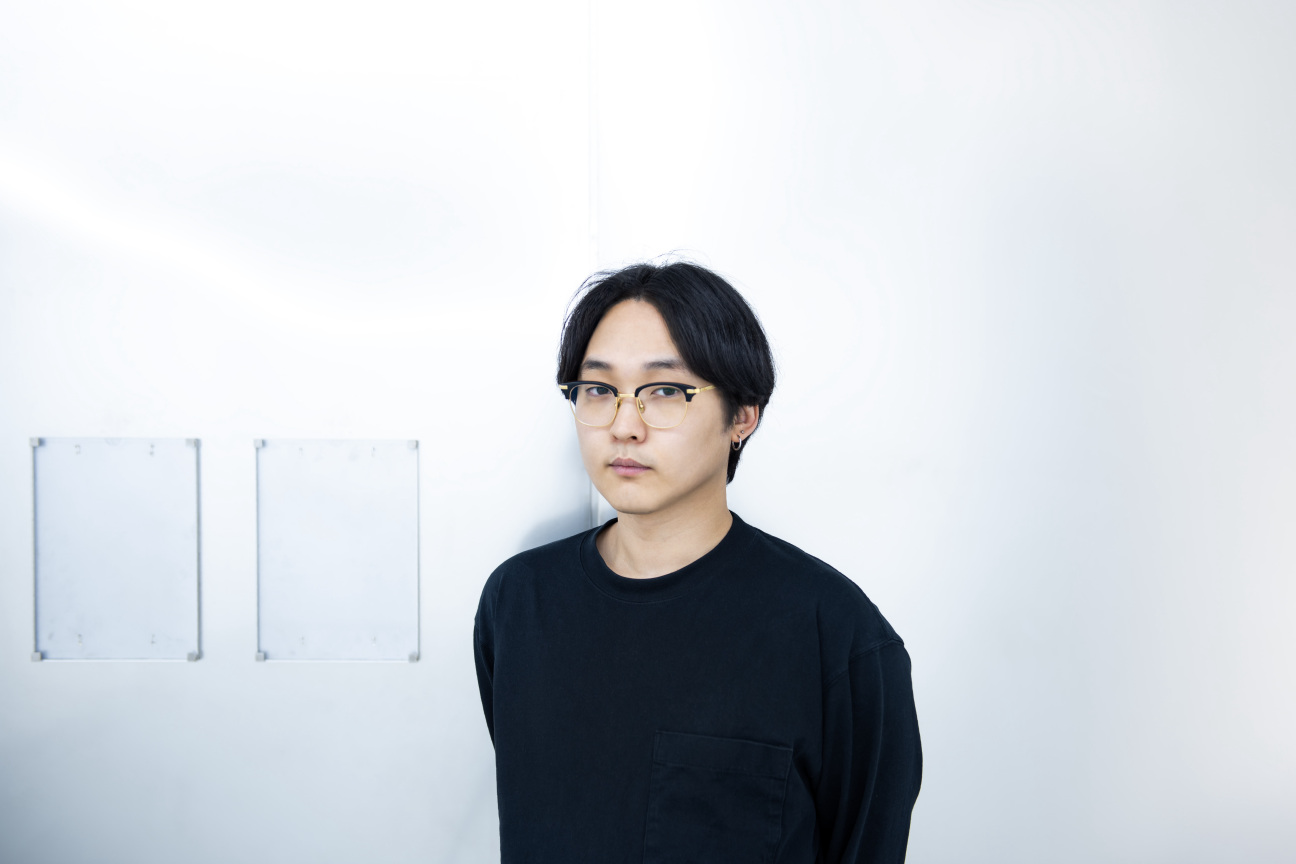
Cylinder
Founder: Dooyong Ro
Founded: 2020
Location: Seoul
The new kid on the art block in Seoul, South Korea, is Cylinder, which was established in 2020 by artist-turned-dealer Dooyong Ro, a former artist, in Gwanak-gu, a part of the city not populated by international blue-chip dealers. Since its founding, the gallery has quickly gained recognition among both locals and visitors and opened Cylinder Two in Yongsan-gu, near the city center. It earned the prestigious Focus Asia Stand Prize at Frieze Seoul 2023 for its solo presentation of the painter Sinae Yoo that centered around the concept of “post-truth.” Notable exhibitions include Tristan Pigott’s acclaimed show “Parallel Motion” in 2022, Kevin Gallagher’s “Soft Wall” in 2023, and Lee Kyung-min’s “Unseen Dimensions” in 2024. –Tom Seymour
If you could stage a show with any two artists, dead or alive, who would you pick?
Salvador Dalí and David Altmejd.
What do you want to see more of in the art world? What do you want to see less of?
More diverse gallery models. Less broken trust.
What’s the craziest thing you’ve ever done to save money for your business?
Saved money for a car but used it to open a second gallery.
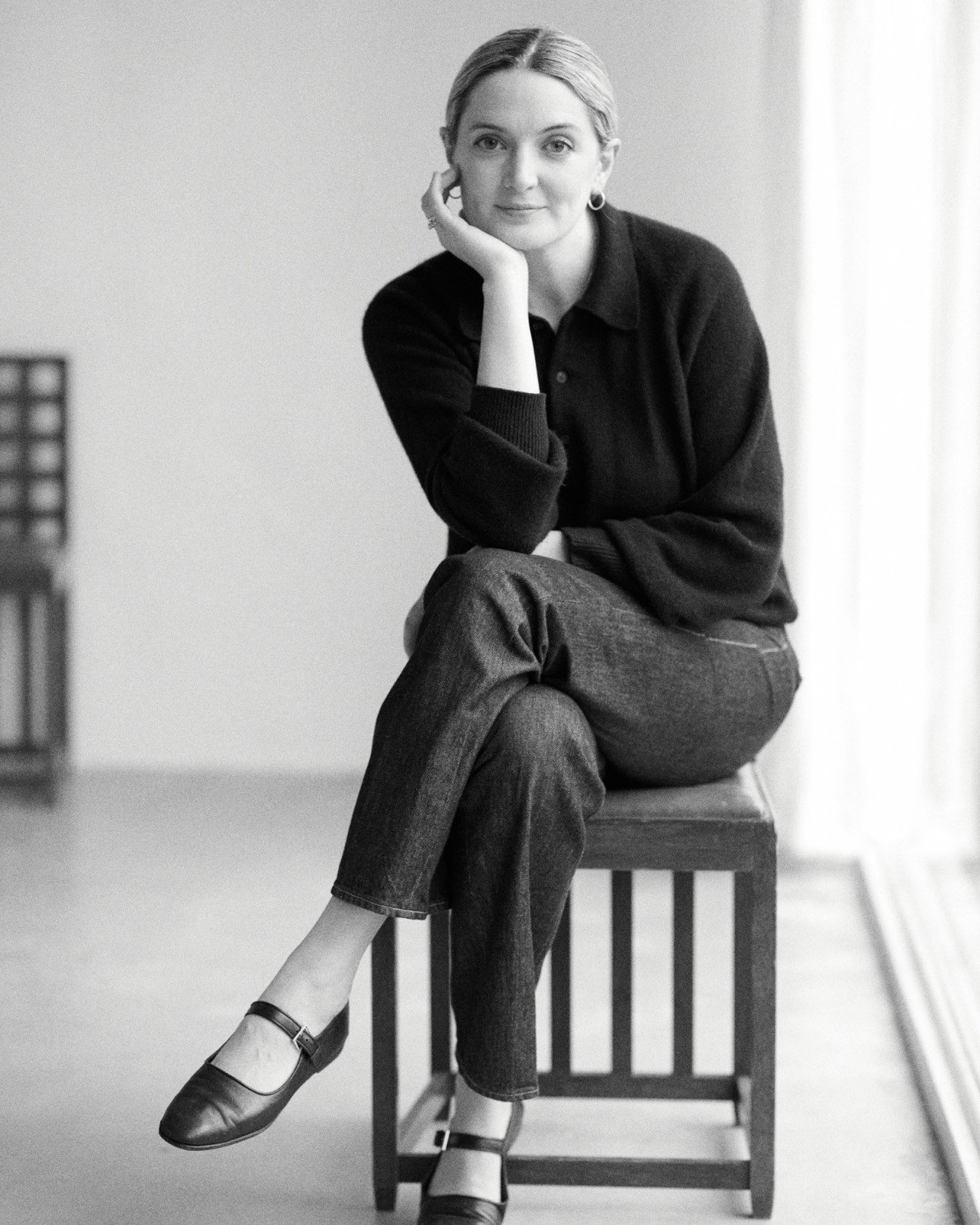
Fernberger
Founder: Emma Fernberger
Founded: 2024
Location: Los Angeles
If you work long enough for other dealers, says gallerist Emma Fernberger, “There comes a time when you realize, wait, I have all the skills and ability to do this entirely myself.” The former New Yorker spent seven years as a director at Bortolami before opening her eponymous Los Angeles space in January 2024, fulfilling a longtime dream of moving to to the West Coast. On Melrose Hill, her program spans from emerging to later-career. Representing mature painters who have yet to receive the recognition they are due, like Anne Wehrley Björk and Vicky Colombet, is “emblematic of my vision and what I enjoy doing,” Fernberger says. “[I’m] looking retrospectively at artists whose careers need reappraisal.” –Janelle Zara
If you could do a two-person show with any artists, dead or alive, who would they be?
I would love to see a show that pairs Florine Stettheimer’s work with David Hammons’s. They represent the hedonism of New York in bygone eras where an actual avant-garde was happening.
What’s the biggest barrier to entry for starting a gallery?
The initial capital investment. Even if you’re starting a project space in your own apartment, you still have to make a brand identity, you still have to make a website, you still have to get things photographed, you still have to light things. You still have to pay for shipping and photography. There are so many costs that, if you don’t have that initial startup capital, are just really challenging.
What is the craziest thing you’ve ever done to save money for your business?
Asking for discounts. You can pretty much haggle wherever, within reason. I mean, people haggle with me all the time. I would be so ashamed to do that in my normal life, but do what you gotta do.
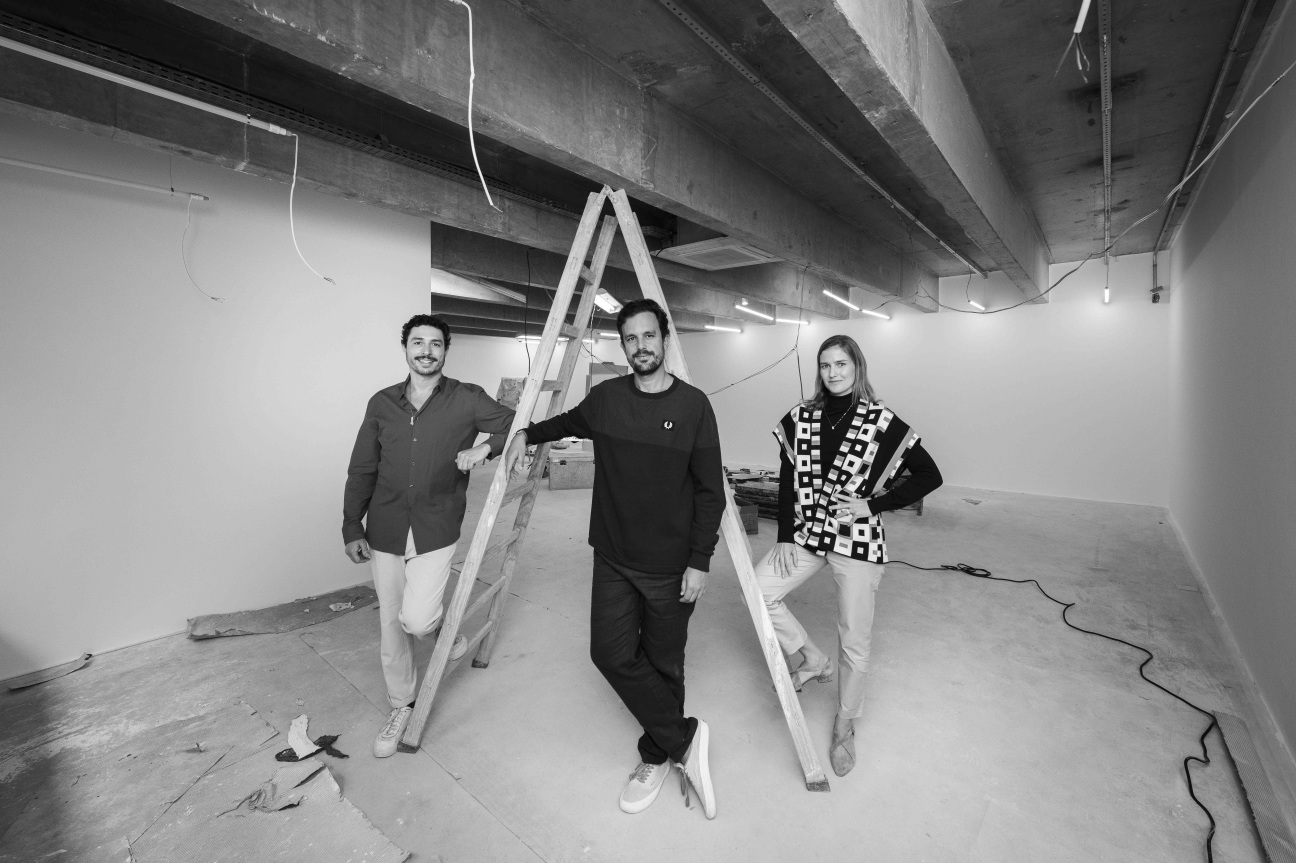
Galatea
Founders: Antonia Bergamin, Conrado Mesquita, and Tomás Toledo
Founded: 2022
Location: São Paulo and Salvador
Galatea was founded by a powerhouse trio with deep roots in the Brazilian art world: the veteran art dealer Antonia Bergamin, who spent almost a decade as a managing partner at Gomide&Co; the collector and dealer Conrado Mesquita; and Tomás Toledo, the former chief curator of MASP, Brazil’s largest museum. In its short lifespan, the gallery has already developed a reputation for identifying compelling self-taught artists, from the painter and samba composer Heitor dos Prazeres (1898-1966) to Allan Webber, a multidisciplinary artist who first gained attention for a photo series he created while working as an app delivery driver during the pandemic. Since opening its first space in São Paulo’s Jardins neighborhood, Galatea has added two more locations, one a block away and one in Salvador. –Julia Halperin
If you could stage a show with any two artists, dead or alive, who would you pick?
Antonia Bergamin: Allan Weber and Ellsworth Kelly.
What’s the biggest barrier to entry for starting a gallery?
Bergamin: Network network network.
What’s the craziest thing you’ve ever done to save money for your business?
Bergamin: I’ve stayed in some pretty nasty, smelly hotels during international art fairs in order to have money to eat in good restaurants and meet people.
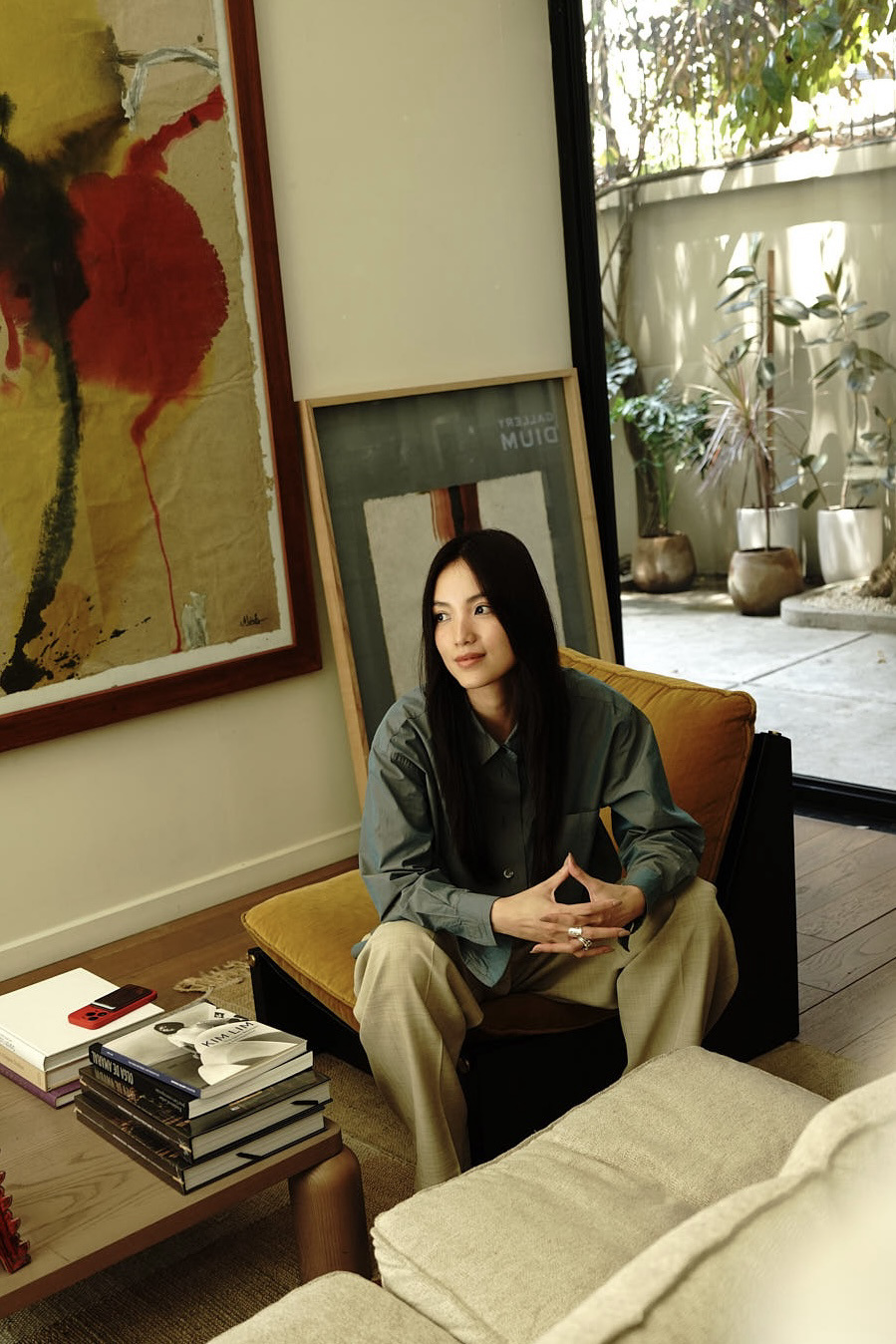
Gallery Medium
Founder: Coca Huỳnh
Founded: 2022
Location: Ho Chi Minh City
Ho Chi Minh City is not (yet) an internationally renowned art-market hotspot, but it has begun to capture the eye of tastemakers with the help of Gallery Medium. Coca Huỳnh, an interior designer by trade, established the space in 2022 in the city’s Vo Thi Sau Ward. The idea started to take shape when she was working on hospital design projects and found that mid-tier artworks were hard to find in other galleries. “I began searching for these artists on social media, reaching out to them, and collecting their artworks,” she says. “Over time, this evolved into creating a platform dedicated to emerging and up-and-coming artists.”
In late 2024, Gallery Medium celebrated its second anniversary by unveiling a new space in the TDX Ice Factory, in collaboration with other art organizations. Notable recent exhibitions include a display of new work by the multimedia artist Arlette Quỳnh-Anh Trần. –Tom Seymour
What makes your gallery and program unique?
The way we merge art and design in a dynamic, ever-evolving space. Most of the artists we showcase are under 38 years old, and we try to refresh our curation every three to four months, ensuring that there’s always something new and exciting for our visitors to experience.
What’s one thing you wish you knew before opening your gallery?
That flexibility would be crucial.
What keeps you up at night?
The rapid development of Vietnam as an emerging market for art.
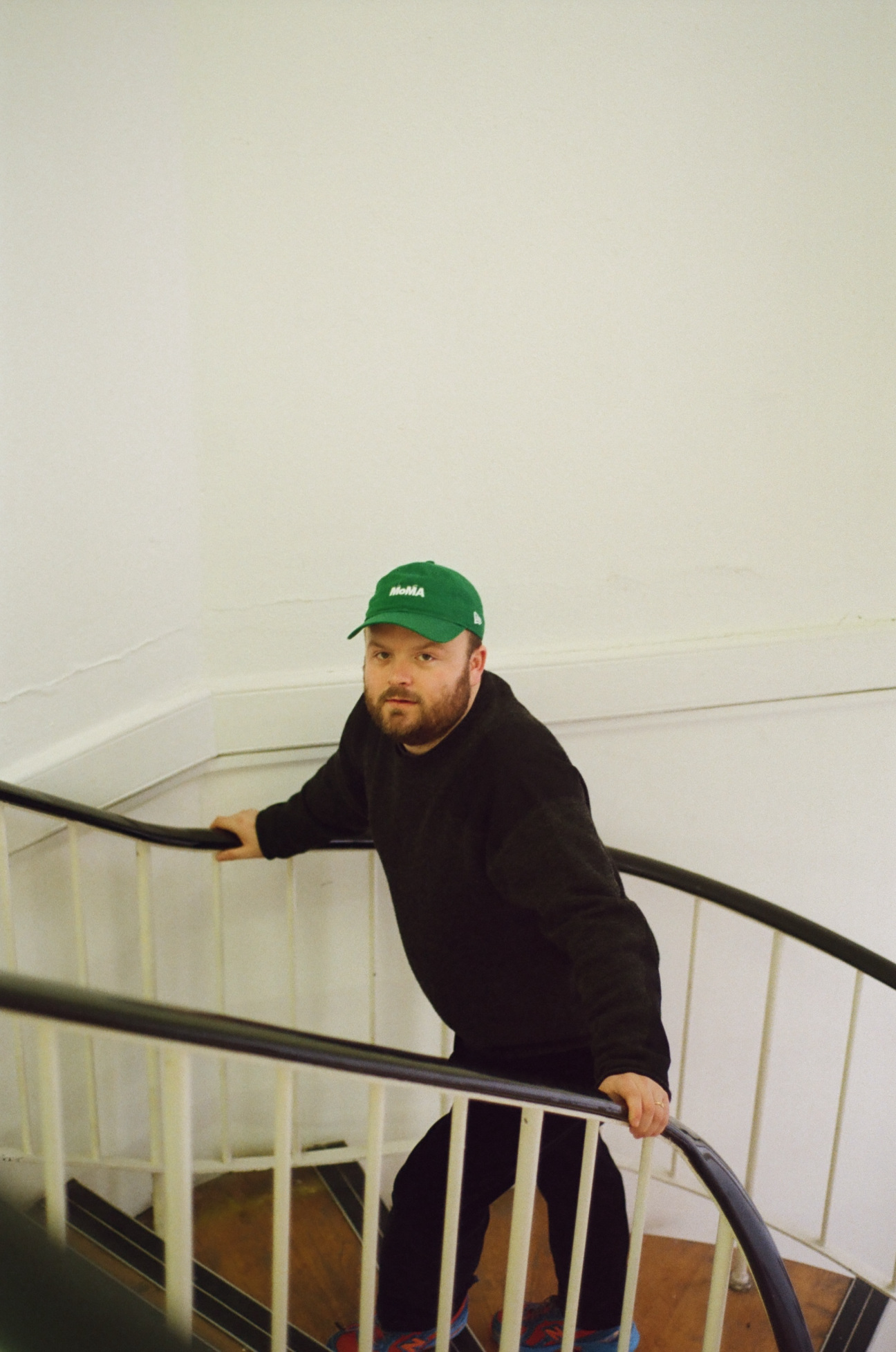
Ginny on Frederick
Founder: Freddie Powell
Founded: 2020
Location: London
Ginny on Frederick takes its unique title from founder Freddie Powell’s mother’s name, Ginny, and the street of its original location, Frederick Terrace in Hackney, East London. The gallery has moved around since then, popping into London’s Smithfield Market where it offered visitors a side of contemporary art with their lunch. Powell placed his upstart in a former sandwich shop, retaining its original tiled interior and signage, which read: “Sunset Sandwich Bar II: Hot & Cold Food to Take Away.” Now just down the road in a more traditional, industrial space, the expanded gallery has garnered fans including Flag Art Foundation director Jonathan Rider, curator Lumi Tan, and dealer Robert Keith. It has become known as a daring and often audacious platform for early-career practitioners emerging from London’s art school ecosystem. –Tom Seymour
What past show or project do you feel best illustrates your point of view as a dealer?
Our first show was with Jack O’Brien. It had just two vertical sculptures almost piercing the space. Very strong and direct, now feels like it was the perfect start.
If you could stage a show with any two artists, dead or alive, who would you pick?
I need three! James Lee Byars, Paul Thek, and Felix Gonzalez-Torres.
What do you want to see more of in the art world? What do you want to see less of?
More affordable studio spaces for artists (and wider rent controls). Less boring men in positions of power and influence.
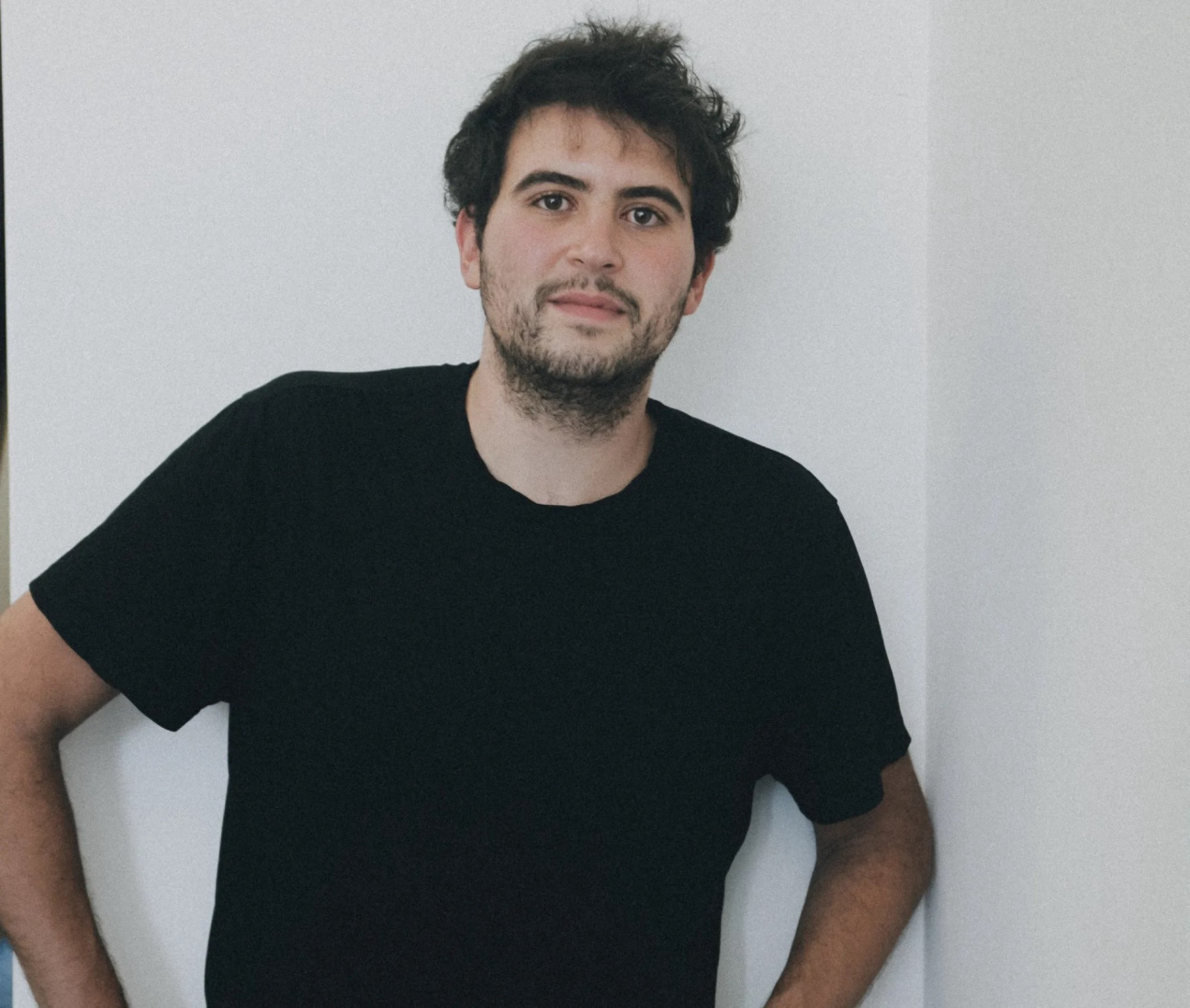
Gratin
Founder: Talal Abillama
Founded: 2023
Location: New York
Talal Abillama admits that his approach to running Gratin is intense. But it has paid off. An alumnus of Vito Schnabel’s shop, he has launched careers—like that of the 22-year-old painter Lorenzo Amos—and secured sales that stand out in a down market. “I knew from when I was 16 years old that I wanted to be an art dealer,” Abillama tells me. “I was born to do it.” Typically representing emerging artists, Abillama broke from form last year when he presented a show of photorealistic paintings by the late artist John Kacere, foreshadowing a transition into a more heterogeneous stable. His connections to artists are what keep him going, though. “I have great relationships with them; talk to them every day,” he says. “So if they decide to leave, I know they’ll miss me.” –Melissa Smith
What is one thing you wish you knew before you opened your gallery?
I wish I knew it wasn’t that easy. You have to think as a businessman, but at the same time, you have to be creative. And think about what’s good for the art community. I feel like everyone wants to be in our deal when the market is doing well, but when it’s not doing great, that’s why you question yourself.
What do you want to see more of in the art world?
Collaborations. It’s the most important thing at the end of the day. Art was made to put people together.
What’s the biggest barrier to entry for starting a gallery?
To believe in yourself. Most people want to open a gallery, but they don’t believe in themselves.
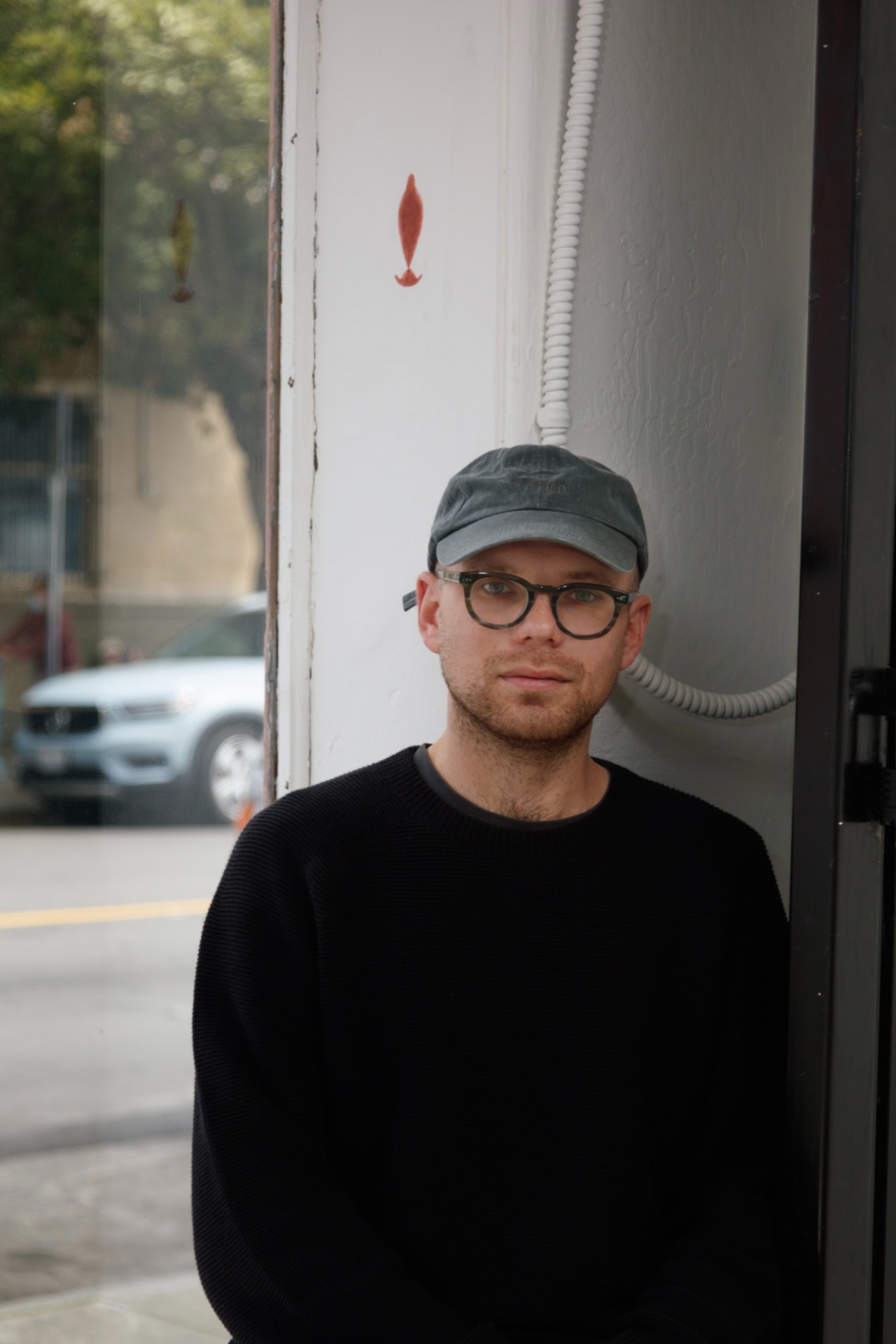
House of Seiko
Founders: Cole Solinger and Nicolas Torres
Founded: 2023
Location: San Francisco and Los Angeles
Since 2023, House of Seiko has highlighted the Bay Area’s artistic legacy, particularly its undersung. Recent shows of the late local illustrator and painter Arthur Okamura and the Surrealist Ariel Reynolds Parkinson, says co-founder Cole Solinger, “speak to my love for the visionary in corners that are perhaps forgotten.” With nearby bar owner Nicolas Torres, he opened the gallery in a former Mission District watch store, having studied at the San Francisco Art Institute and previously worked at SFMOMA, Altman Siegel, and the project space Delaplane. A former sign painter, Solinger saw the name House of Seiko hand-painted above the door and knew he had to keep it. The gallery’s new Angeleno outpost, in East Hollywood, opens June 14 with a show of works by Chris Lux. –Janelle Zara
What’s the craziest thing you’ve ever done to save money for your business?
I kind of sort of lived secretly above a bar that is next to the gallery in the first year that it was open. San Francisco is so expensive, and I just needed to be nearby.
If you could stage a show with any two artists, dead or alive, who would you pick?
It’s a tie. For the dead, Lutz Bacher and Wallace Berman. Berman’s the perfect character to stitch together that specific era of history between San Francisco and Los Angeles. And Lutz is incredibly influential—a legend who worked in San Francisco her whole career. The satire in her work is so intelligent and elegantly presented. You don’t see that often, and when you do it’s a gift. The living would be Trisha Donnelly and Jason Dodge.
What would you like to see more of and what would you like to see less of in the art world?
I want to see more meaningful conversations and risk-taking on all sides, and less investment buying.
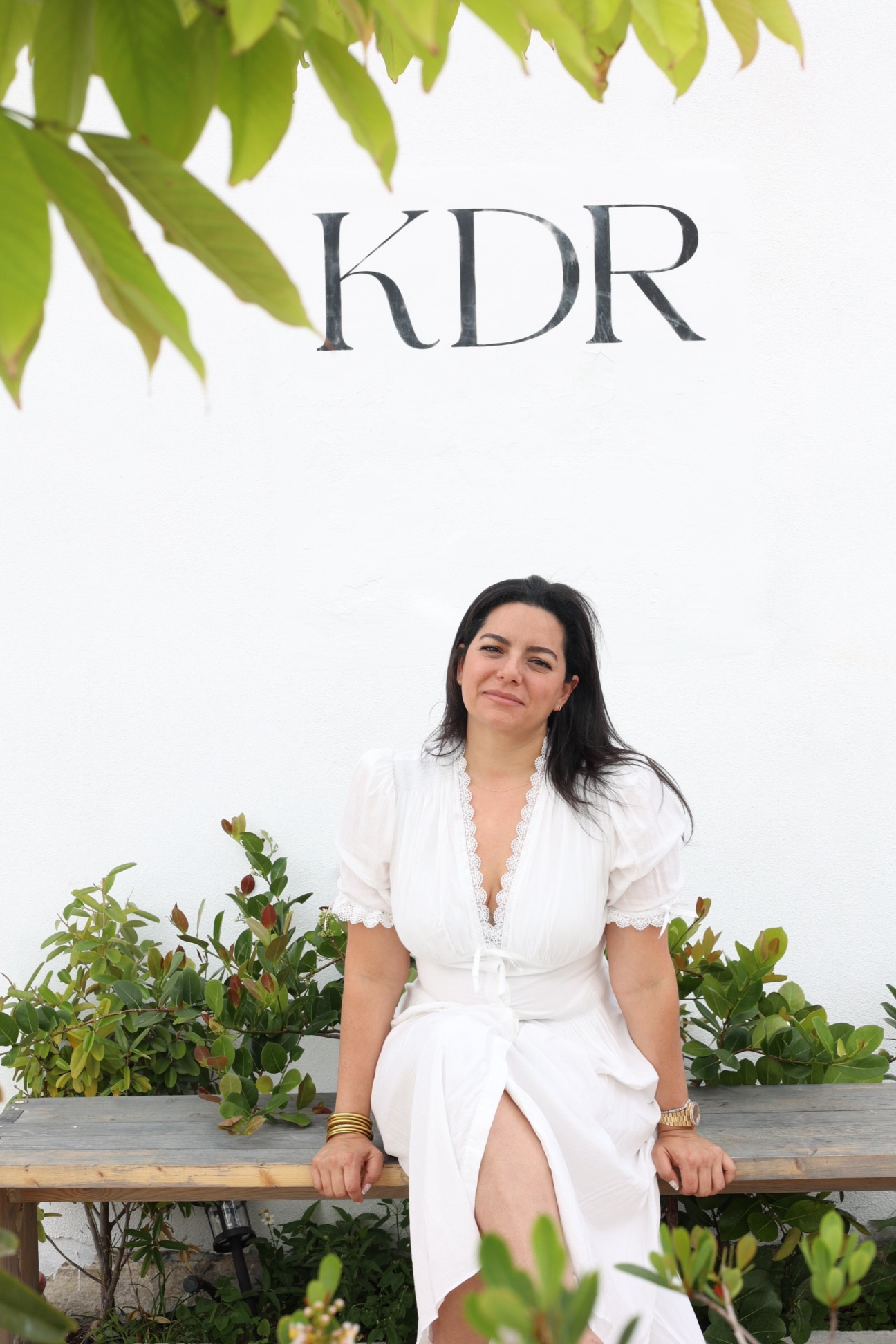
KDR
Founder: Katia David Rosenthal
Founded: 2021
Location: Miami
Most art dealers do not work from home. Katia David Rosenthal was, until somewhat recently, an exception. She started her gallery inside her walled-in patio in Miami’s Little Havana neighborhood. “It became a cult classic,” she says, recalling evenings when 300 people would flood her backyard for an opening. Rosenthal cut her teeth at galleries in New York (Kansas Gallery, Eleven Rivington) before returning home to Miami. After almost six years working for the dealer Bill Brady and operating her house gallery on the side, she decided to make a real go of it. In 2023, she opened her own brick-and-mortar in the up-and-coming art hub of Allapattah; her program focuses on Latin American and Miami-based artists “with a touch of New York school people.” –Julia Halperin
What past show or project do you feel best illustrates your point of view as a dealer?
In 2024, we had an exhibition for Joel Gaitan, a first-generation Nicaraguan American artist from Miami. It was an ambitious installation featuring a curved ’90s-inspired, Miami Vice glass block wall and bubble gum pink vinyl floors that I installed myself. I went to art school, and I love transforming my space with artists eager to create something exciting; it makes me feel like I’m making art again. Miami hosts incredible talent, and I’m committed to championing local artists while positioning the city as a genuine site of cultural production rather than just a marketplace.
What is one thing you wish you knew before you opened your gallery?
I worked for many galleries before opening my own. I knew what to expect, but when the money flows more out than into your bank account… it just hits different now. (Shipping costs are insane.)
If you could stage a show with any two artists, dead or alive, who would you pick?
I have actually thought about this a lot! Louise Bourgeois and David Altmejd together in a room would be insane. Both artists work with the human form but transform it in surreal, sometimes unsettling ways. Holla at ya gurl David, I’m a big fan!

Llano
Founders: Mauricio Cadena and Sergio Molina
Founded: 2020
Location: Mexico City
Most young galleries make their Art Basel Miami Beach debut with an eye-catching installation or a series of paintings by a buzzy name. But Llano is not like most galleries. The CDMX-based outfit made a splash at last December’s fair with a solo show of props developed by the 34-year-old Mexican choreographer Diego Vega Solorza.
Since the gallery’s founding by Mauricio Cadena and Sergio Molina in 2020, Llano has expanded from the top floor of an industrial storage space at the edge of Roma Norte to a second space in the same building. Cadena got his start working in galleries while Molina was a commodities trader for the government with a passion for art. Partners in life and work, the duo decided to “open Llano as a ‘family’ venture” to invest in research-heavy practices that don’t always get a proper platform. “We like to think of Llano as a public open space for conversations between the audience and the artists,” they say. –Julia Halperin
What is one thing you wish you knew before you opened your gallery?
One thing we knew, but that we consider key, is that you have to develop the talent to read the global pulse of art as a market and compare it with your particular vision. Developing a sensibility to avoid bubbles and speculation is something we consider extremely important to make a gallery sustainable in the long term. It’s also very important to protect an artist’s career in the long run.
What do you want to see more of in the art world? What do you want to see less of?
More commitment, less flipping. We would like to see more patience from the market. We are constantly encouraging young collectors to stop seeing art as an investment tool that responds at the same pace as other investment portfolios.
What’s the craziest thing you’ve ever done to save money for your business?
You can be smart and try to hack the system, but honestly, there’s no way to really save money in this business.
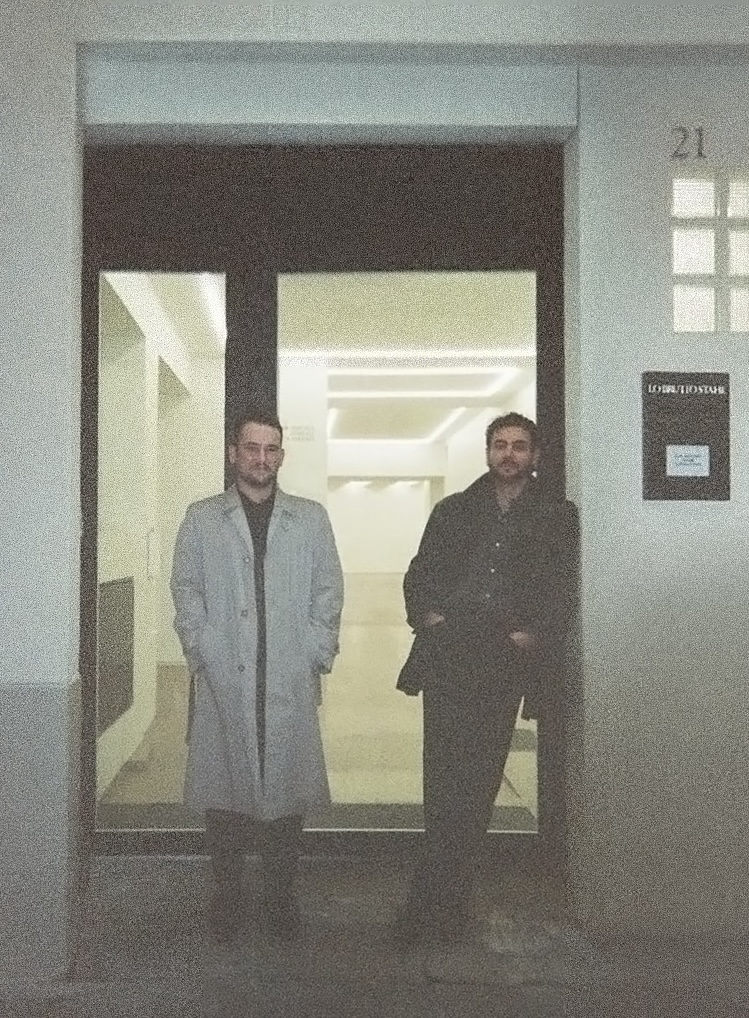
Lo Brutto Stahl
Founders: Vincent Lo Brutto and Pablo Stahl
Founded: 2023
Location: Paris and Basel
Vincent Lo Brutto and Pablo Stahl started mounting exhibitions together when they were still in art school in Mulhouse. They’d take over parking lots and other vacant pockets of the Alsatian town’s urban fabric, this itinerant scenography as important to them as the pieces that filled it. A decade later, the pair traded in their hometown experiments for a more traditional white cube in Paris, but they wouldn’t leave their penchant for the site-specific unattended for long.
Lo Brutto Stahl set up shop in the Marais in 2023 and immediately caught the attention of an art world that had shifted its attention from London to the French capital post-Brexit. (Art Basel Paris’s first edition happened just six months before the gallery opened its first exhibition, a choral exercise featuring artists including Ivana Bašić, Giulia Cenci, and Yves Scherer.) A battery of theoretically rigorous shows with the likes of Polish painter ML Poznanski and New York-based sculptor Bat-Ami Rivlin followed. Their category-allergic program has caught the eye of Hauser & Wirth, who tapped Lo Brutto and Stahl to show Italian artist Carlotta Amanzi in their Parisian flagship this past May, and a growing roster of international collectors. Not bad for two art-school grads with no prior gallery experience. But it’s their off-site caper during last year’s Art Basel that really put them on the map. Lo Brutto and Stahl displayed works by 27 artists in Basel’s private (and fully-functioning) airport. Its lounges, hangars, and hallways have been their curatorial playground ever since, as the duo has officially made Air Service the gallery’s second home. –Ella Martin-Gachot
If you could stage a show with any two artists, dead or alive, who would you pick?
We have too many ideas—some absurd, some that could really happen, and some that we’re already working on. But if we could, we’d rather have a conversation with historic gallerists, like Vollard, Durand-Ruel, Renée Gimpel, Wildenstein, or Castelli. Their kind of elegant madness is what we aspire to.
What do you want to see more of in the art world? What do you want to see less of?
More risk. Stronger identities. Radically free choices. Less comfort. We’d love to see more galleries thinking in decades—not seasons.
What’s the biggest barrier to entry for starting a gallery?
Not understanding artists. That’s the foundation. You have to know how they work, how they make decisions, what kind of space they need—mentally and materially. It’s not about steering them toward sales. It’s about protecting their freedom while building real dialogue with collectors.
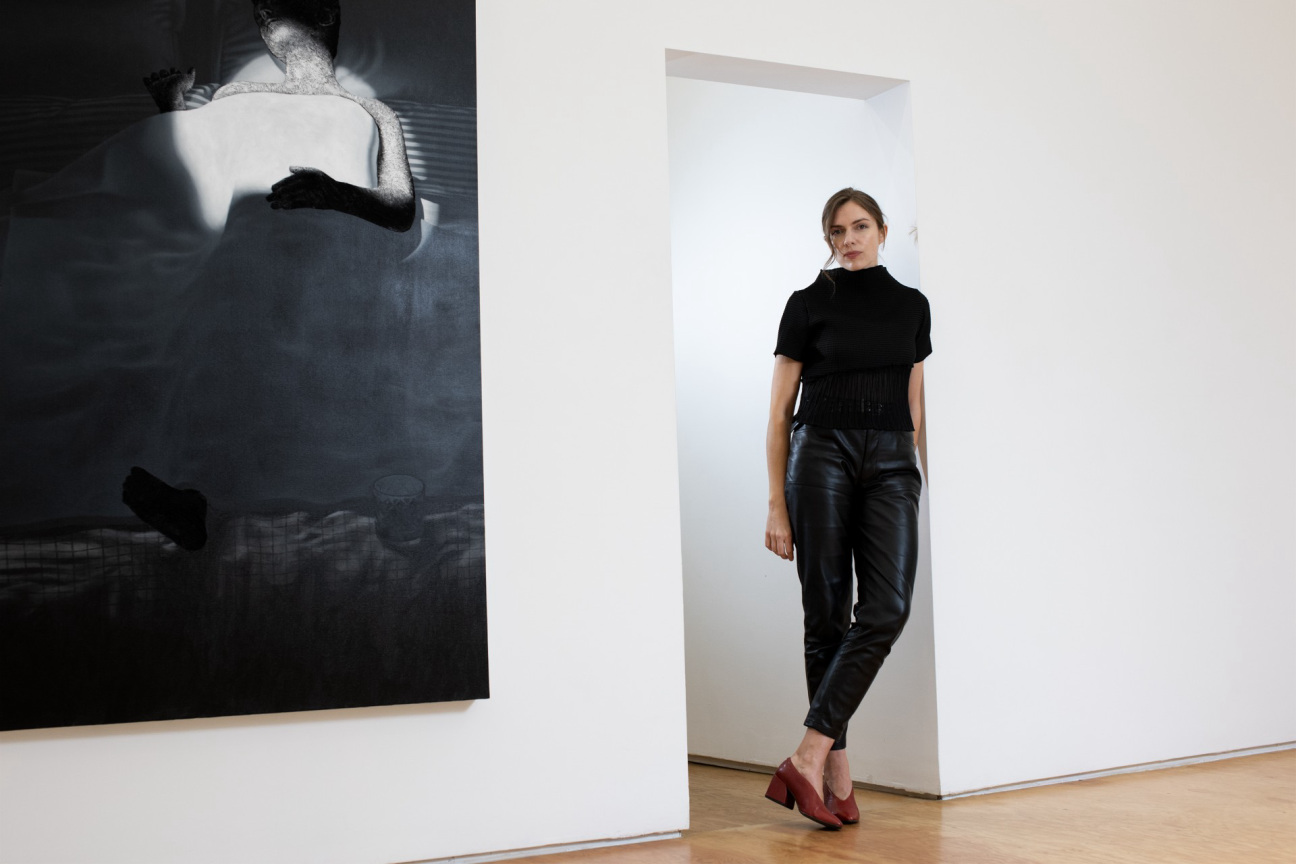
Margot Samel
Founder: Margot Samel
Founded: 2022
Location: New York
Finding success in a crowded space like the New York art market often involves identifying a gap that only you can fill. Dealer Margot Samel noticed that “there wasn’t a single gallery in the U.S. representing Estonian artists.” Samel—who is Estonian-born—set out to change that with her eponymous gallery, which is largely dedicated to artists from the Baltic region. A 15-year industry veteran who cut her teeth in nonprofits, Samel never considered opening her own shop, even after coming to New York a decade ago to work as a director for Kate Werble Gallery. But after she came to understand how dealers could be instrumental in “really strategizing an artist’s career” and identifying a group she wanted to do that for, Samel decided to strike out on her own. She has built out her roster with several overlooked or self-taught artists—like the late Leroy Johnson, whose recent presentation she called one of her “big wins.” –Melissa Smith
If you could stage a show with any two artists, dead or alive, who would you pick?
Bas Jan Ader and Olivia Jia. Ader’s work, including Thoughts Unsaid, Then Forgotten, 1973—arguably my favorite work of all time—explores themes of memory, loss, and impermanence, with a lyrical sensibility. Next month marks the 50th anniversary of Ader’s mysterious disappearance at sea in 1975, adding another layer of poignancy to his work. Jia’s paintings, blending personal mementos with references to American and Chinese art history, examine how identity is shaped by inherited objects and fragmented histories. Together, I think they would create an intricate dialogue about memory, absence, and identity.
What keeps you up at night?
Shipments! I’ve noticed that I scarcely get any sleep during the week when an entire exhibition is being shipped from the artist’s studio (or estate) to the gallery. It would be wonderful if more artists took a page from Rosalba Carriera and concealed lucky charms within their works for protection—I’d definitely lose less sleep over shipments that way.
What’s the craziest thing you’ve ever done to save money for your business?
Founding an art fair (Esther) in 2024 to save $1,500 in participation fees as an exhibitor.

Max Goelitz
Founder: Max Goelitz
Founded: 2020
Locations: Munich and Berlin
Max Goelitz established his eponymous gallery when much of Europe was in lockdown during the pandemic. Making waves in March 2021 with a successful show of new works by the German collective Troika, the gallery has since established itself as one of Germany’s leading new spaces for contemporary abstract and conceptual art. And it expanded quickly; in November 2022, it opened a second location at Rudi-Dutschke-Strasse 26 in Berlin. Notable recent exhibitions include “Five” by Rindon Johnson, staged shortly after the artist was nominated for the Future Generation Art Prize. Goelitz worked with the Pinchuk Art Centre in war-torn Kyiv, which originally displayed the work, to ensure it could continue to be exhibited. To present the work, the gallery sourced two tons of historic paving stones, cut a permanent opening into an exterior wall during the winter, and published a fragment of a sci-fi novel. –Tom Seymour
What is one thing you wish you knew before you opened your gallery?
That the art world loves to talk about freedom—but in reality, you’re squeezed into a rigid calendar of fairs, openings, and gallery weekends.
What keeps you up at night?
Either electronic music or the creeping realization that I only dreamed I replied to that email.
What’s the craziest thing you’ve ever done to save money for your business?
During the pandemic, I applied to sell face masks and tried to source them in high volumes to keep the gallery open.

Praise Shadows
Founder: Yng-Ru Chen
Founded: 2020
Location: Boston
A veteran of the New York art scene, Yng-Ru Chen worked at the Asia Society, MoMA PS1, and Sotheby’s before the pandemic brought her back to her hometown of Brookline, Massachusetts. “I was walking by the space that is now my gallery and it had a ‘for lease’ sign,” Chen recalls. “I’m not joking when I say it was a eureka moment.” Michelle Millar Fisher, a decorative arts curator at the Museum of Fine Arts, Boston, says Chen’s ambitious and conceptual program has “immeasurably changed the Boston artscape for the better.”
The gallery developed a national profile after Jerry Saltz cited her Independent Art Fair presentation of a scroll by Yu-Wen Wu as one of the 10 best art shows he saw in 2022. (This year, she presented a two-person presentation of Jean Shin and Duke Riley.) Chen, who also co-founded the new Berkshires invitiational Arrival, has a knack for figuring out how to market unwieldy, noncommercial work—like the artist Nicole Wilson’s National Debt Project, in which the artist sent her spare change to the U.S. Treasury over 10 years. “A bank with a corporate art collection bought the entire archive,” Chen says proudly. –Julia Halperin
What is one thing you wish you knew before you opened your gallery?
I wish I had met my bookkeeper and accountant earlier. It’s wild that I thought I could handle those things by myself.
What’s the biggest barrier to entry for starting a gallery?
There are so many barriers, including access to funding or small business loans (none of which I had when I started), real estate (I was lucky with my landlord), to name two. But fundamentally, a gallery needs access to relationships for sales, press, acquisitions. It requires a lot of knowledge of the ecosystem, which comes with experience. I could not have succeeded if I opened an art gallery earlier in my career since I had neither money or family connections to get a single toe in the door. I got my first job at a museum by answering an ad in the printed classified section of The New York Times in 2001, and the person who hired me said she had never hired anyone from those ads before!
If you could stage a show with any two artists, dead or alive, who would you pick?
The irony is that although I own a contemporary art gallery, I have loved Albrecht Dürer and Buddhist sculpture since I was an art history student. If we could time travel, I would mount a show with Dürer and the master sculptor behind the Nelson-Atkins Museum of Art’s iconic Chinese sculpture, Guanyin of the Southern Sea.

Reservoir Projects
Founders: Shona van der Merwe and Heinrich Groenewald
Founded: 2021
Location: Cape Town
Curators Shona van der Merwe and Heinrich Groenewald launched Reservoir Projects in 2021 to place “young, courageous” South African artists on a global stage. After presenting projects with politically engaged local artists in a variety of locations, the duo opened their first space on Bree Street in Cape Town in 2023. “We didn’t have enough for the deposit, but a well-known artist offered to donate a work to the landlord in lieu of three months’ rent,” they say. “We haven’t looked back since.” Beginning on the South African fair circuit with booths at Cape Town Art Fair and RMB Latitudes Art Fair Johannesburg, the gallery has recently begun to dip its toes into international waters, participating in Miart in Milan and Artissima in Turin, where its booth was awarded the New Entries Fund in 2023. –Tom Seymour
What keeps you up at night?
Shipping! No, but seriously, every gallerist wonders at some point if they could be doing more: making a bigger difference, supporting more artists. But ultimately, you have to tend to your own little patch in the sun. Right now, we love the small group of artists we work with—true friends, collaborators, and peers—and we’re excited about what we’re starting to achieve together.
What is one thing you wish you knew before you opened your gallery?
Honestly, nothing. We were acutely aware of the mistakes that could be avoided by following ethical principles, communicating well with collaborators, and, above all, showing kindness to the community. We were lucky to have that foundation.
What would you like to see more of in the art world? Less of?
In the South African context, perhaps there could be more conversations about the role of art in collective healing—how representation and documentation contribute to that process. Economically, we are always interested to see more focus on how proper art training can create real wealth for talented young artists from under-resourced backgrounds. Less: Cellphone photos at art fairs. People snap and move on instead of really looking. That, and not paying artists (which, in 2025, should be unthinkable).
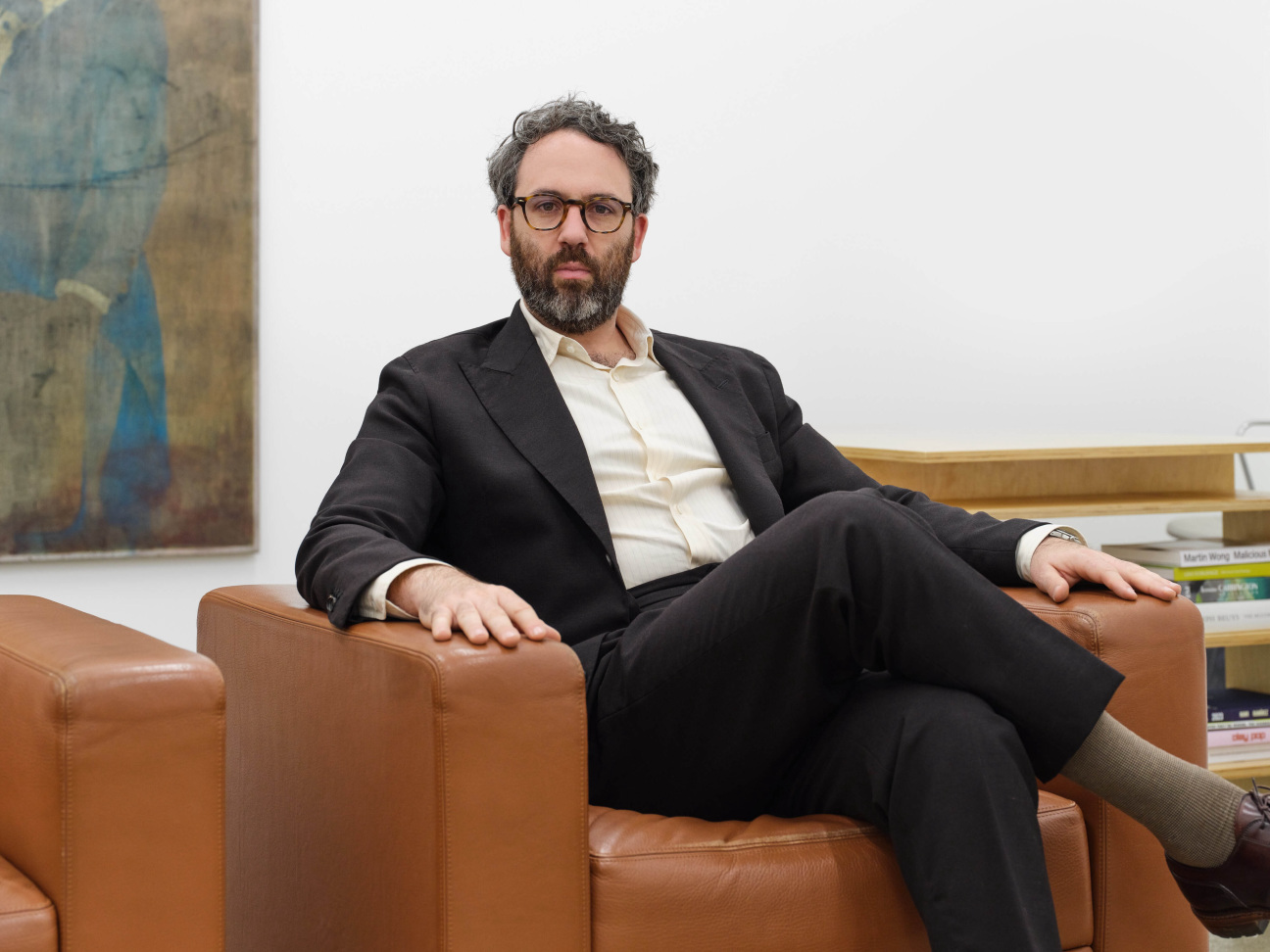
Sebastian Gladstone
Founder: Sebastian Gladstone
Founded: 2020
Location: Los Angeles and New York
This September, Sebastian Gladstone will be celebrating five years in business, which is hard to believe considering the name recognition his gallery already commands. “If you count my living room,” he says, “we’re on our third space in LA.” The dealer’s program just keeps growing, and with it, its physical footprint. This year, Gladstone added a New York outpost, and on its anniversary, the LA space will once again relocate.
The eponymous founder (no relation to the late Barbara Gladstone) made ends meet as a nanny and worked as an art magazine publisher and curator before becoming a dealer. His roster of young talents are the ones who shape the program, he explains, not the other way around. “The first few people I worked with were just from the community of artists that I knew,” Gladstone recalls. “I would ask them what sort of gallery they wanted to be a part of to understand how to mold it.” –Sophie Lee
What past show or project do you feel best illustrates your point of view as a dealer?
Last year we co-curated a William Leavitt exhibition across two galleries in collaboration with Marc Selwyn. This show featured historical work dating back to the late 1960s, a massive installation previously exhibited in Zurich, all the way to recent paintings. The exhibition was quintessentially Los Angeles in its filmic kitsch, material range, and mystical undertones. I liked being able to collaborate with Marc on an intergenerational and curatorial level. I think both exhibitions brought new people into our respective galleries that would rarely overlap. And through the research for the show, I learned a lot more about the history of LA conceptual art. Any show where I am able to participate in discovery for the viewer and myself is a success.
If you could stage a show with any two artists, dead or alive, who would you pick?
A two-person exhibition of Francis Picabia monster paintings and Louise Bourgeois cells.
What’s the biggest barrier to entry for starting a gallery?
I had a young curator ask me a similar question recently. I think the “why” of starting a gallery is really difficult in the current climate. Rent, shipping, and production are all so expensive. Even running a project space can be quite costly. The balance between criticality and commercialism is difficult as you need to keep the lights on, but hopefully present the most ambitious exhibitions possible. Those two things rarely overlap.
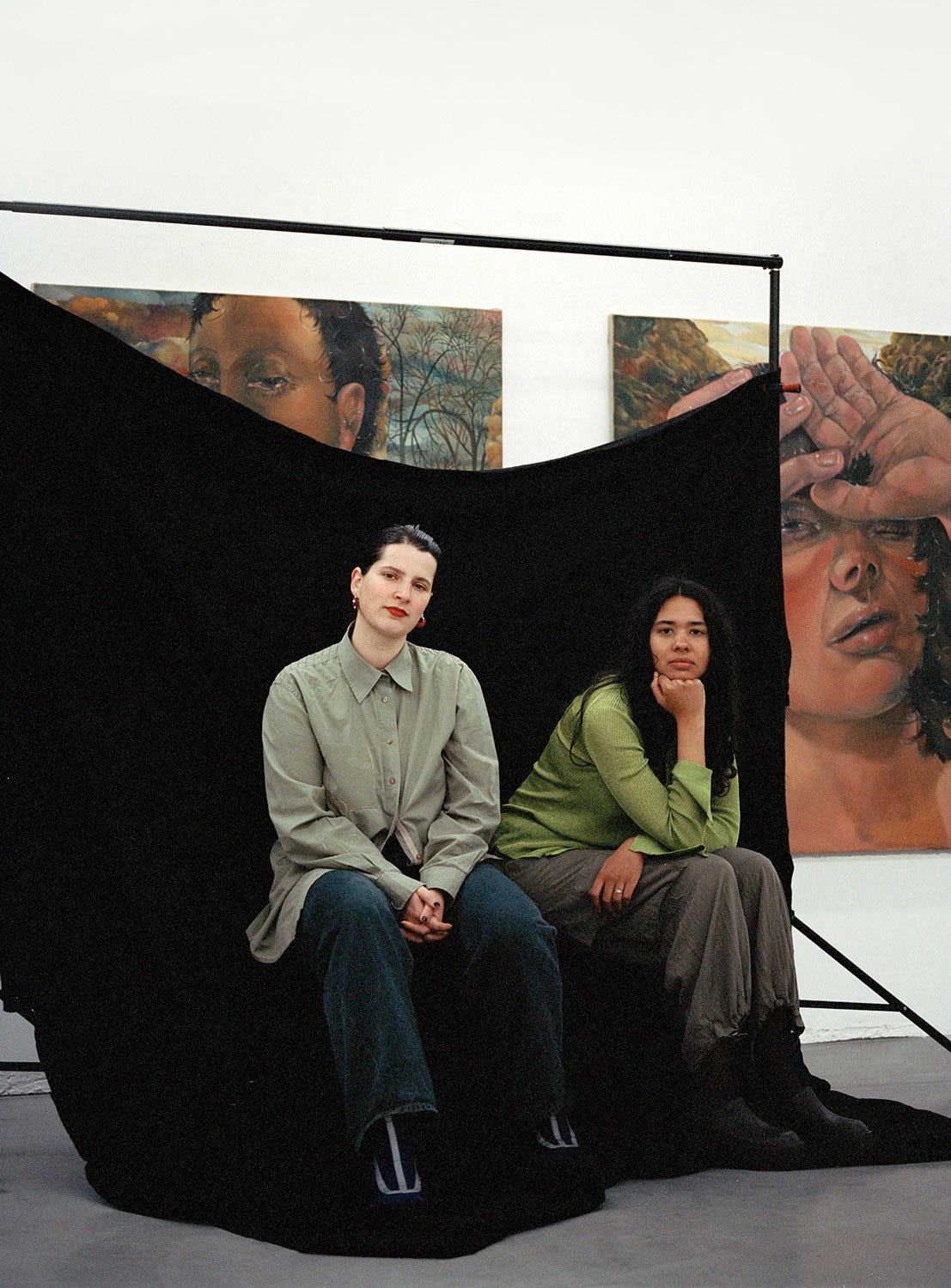
Sissi Club
Founders: Elise Poitevin and Anne Vimeux
Founded: 2022
Location: Marseille
Elise Poitevin and Anne Vimeux didn’t have to come back to their hometown to open a gallery; they never left. The pair opened Sissi Club in 2019 as a project space in Marseille’s Canebière neighborhood after meeting during their art history studies at a local university. Staying put was a bold but obvious choice for the curators. “While many people leave for Paris or abroad, we wanted to create something ambitious and rigorous without abandoning our roots,” they share. “There’s space for experimentation here, and we wanted to be part of shaping what contemporary art could look like in this context.”
Their transition into a more traditional model came in 2022, after presenting Franco-Tunisian artist Inès Di Folco Jemni’s work at the city’s Art-o-Rama art fair. “It was a commercial success,” they remember, “but more than that, it captured our curatorial voice: politically engaged, DIY, and attentive to emerging practices.” Their commitment to community hasn’t let up since. Poitevin and Vimeux share their space with seven artist studios, a dialogue they are celebrating with a group show featuring their current tenants this July and hope to develop into an official residency in the years to come. –Ella Martin-Gachot
What is one thing you wish you knew before you opened your gallery?
Running a gallery is a marathon, not a sprint. Success isn’t about quick wins—it’s about consistency, endurance, and staying true to your values even when things get tough. We’ve learned that when you work seriously and sincerely, people notice. It might take time, but it builds something real.
What keeps you up at night?
Trying to do things differently without burning out. As two young gallerists and art workers, both of us are also young mothers, and it’s our children who keep us awake—reminding us of the need to carve out a future where we can work sustainably, both for the art we love and for them.
What’s the craziest thing you’ve ever done to save money for your business?
For our first international fair—Material in Mexico City—we had to ship a giant furry joystick-shaped pouf by Madison Bycroft. Sending it stuffed would’ve cost a fortune, so we flew with just the cover and hunted down foam in Mexico. We ended up in a street entirely dedicated to sofa filling, bought three huge bags of neon green foam, and hauled them to the fair ourselves. While some others had professional installers, we were on the floor, laughing, elbow-deep in foam, trying to shape a giant furry sculpture. It worked! And it looked great, ending up as the mascot of the fair.
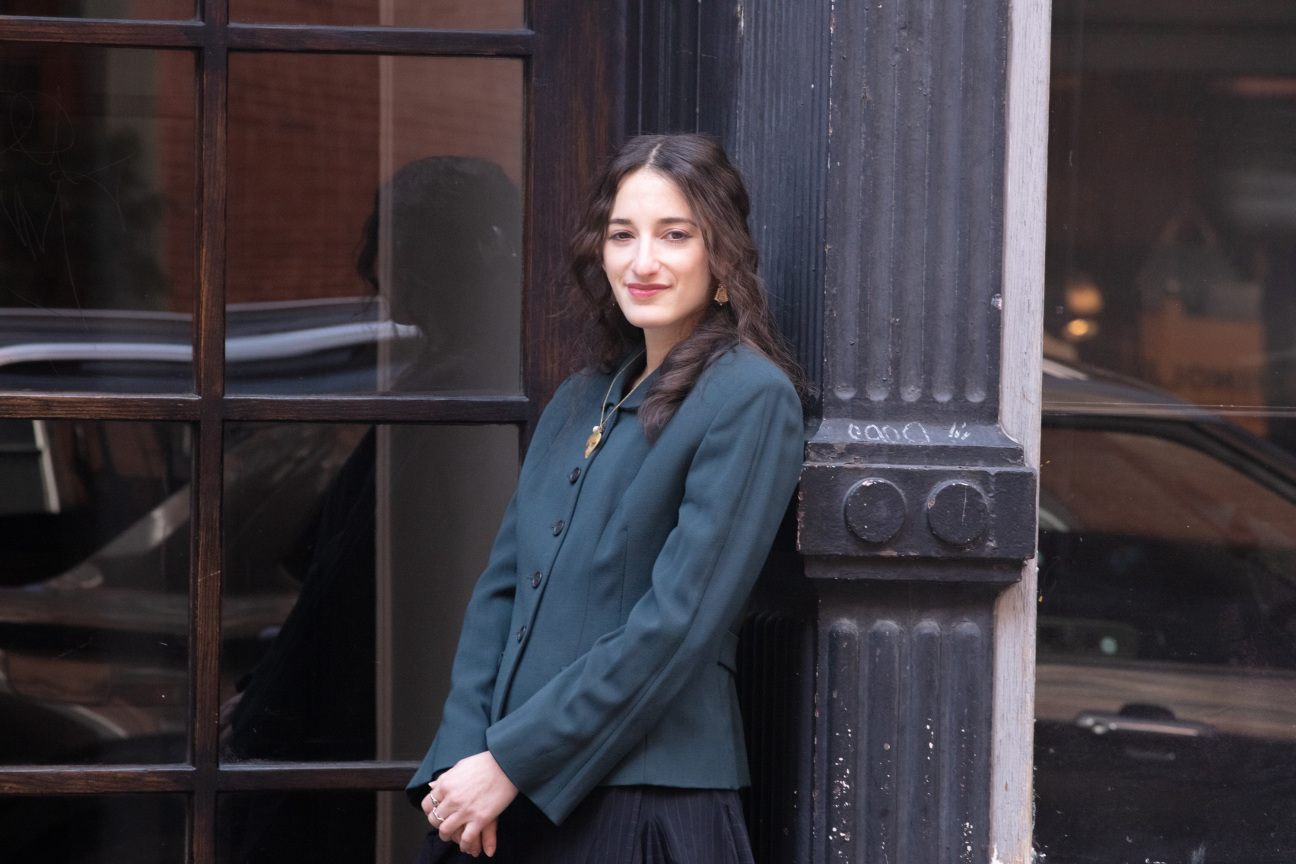
Theta
Founder: Jordan Barse
Founded: 2021
Location: New York
Jordan Barse started “fan emailing,” as she put it, veteran artist Nancy Dwyer before opening Theta in 2021—and then many times after that. Months went by before Dwyer, who made her name during the Pictures Generation era with sculptures of single words, sent a response. Barse considers the show they ended up developing not only “a defining accomplishment for the gallery,” but also a turning point for Dwyer, reinvigorating her career. The rest of Barse’s stable—which she’d cultivated while co-directing the scrappy, artist-run space Kimberly-Klark, and later working at the Lower East Side fixture Kai Matsumiya—are largely earlier in their careers, like David L. Johnson, a conceptual artist whose debut (and third show for the gallery) Barse describes as Theta’s “breakthrough.” –Melissa Smith
What past show or project do you feel best illustrates your point of view as a dealer?
The first big group show from 2022, “You’re Finally Awake!” So much fun and brilliance baked into one show, with works you really had to see in person to appreciate.
If you could stage a show with any two artists, dead or alive, who would you pick?
Paul Thek and Méret Oppenheim. Or maybe I’d commission Maggie Lee to make a video installation for Mariko Mori’s Wave UFO. Bring back Wave UFO!
What’s the craziest thing you’ve ever done to save money for your business?
I flew to Basel for the first time with 50 books and a dozen sculptures (each in their own custom-designed padded box) in four big pelican cases for our first Liste presentation. We sold enough to only have to bring two of those cases back in the end, but it was an elaborate operation that any gallerist who values their physical and mental wellbeing would have outsourced to pack-and-ship professionals.
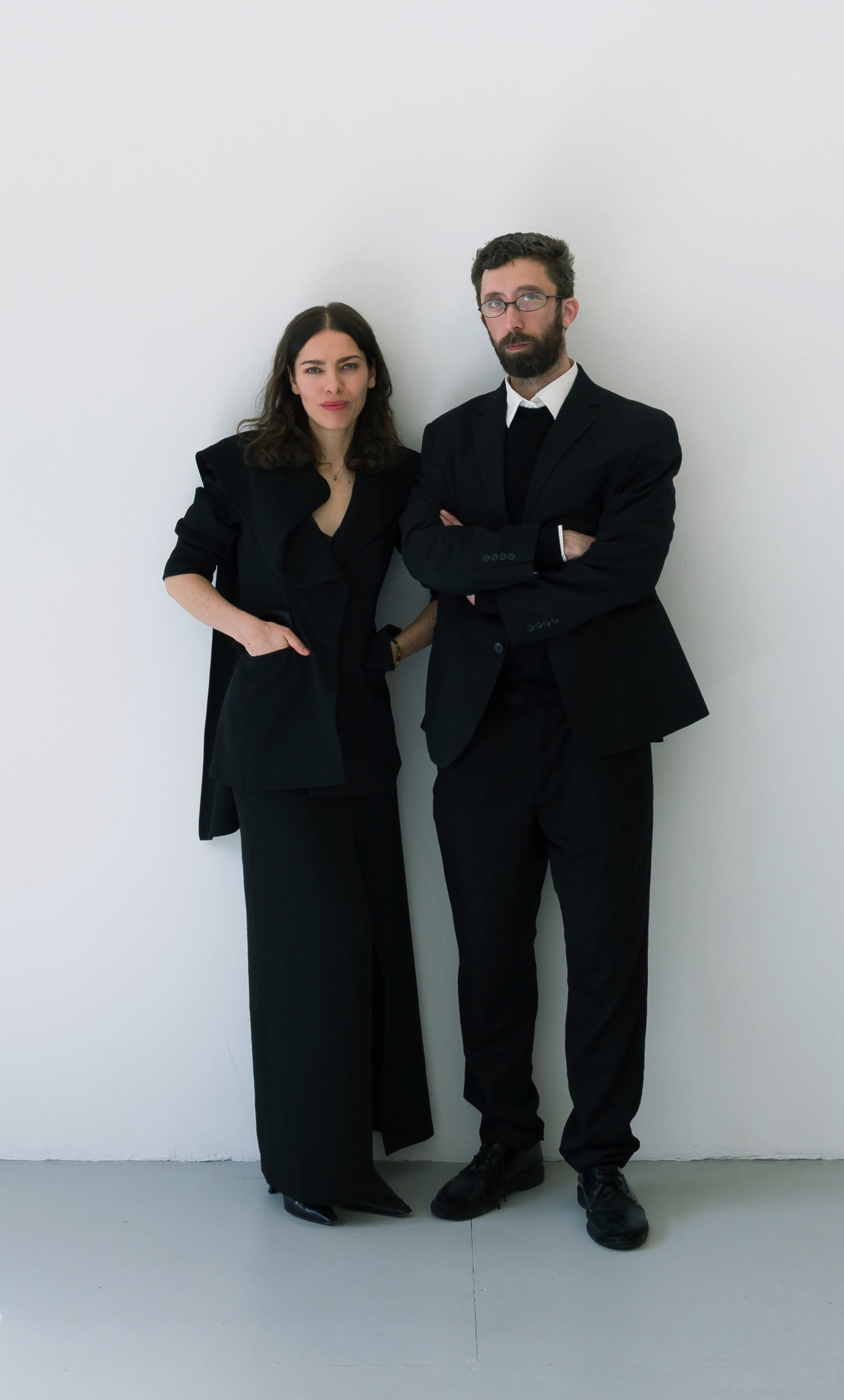
Ulrik
Founders: Anya Komar and Alexander Fleming
Founded: 2022
Location: New York
People joke with Anya Komar and Alexander Fleming, co-founders of Ulrik, that an artist has to be either old or dead to get a show at the gallery. They could also be artists who aren’t known as artists—at least not visual ones—like krautrock singer Malcolm Mooney. Or they haven’t been shown enough (or at all), like the late artist Bettina, whose solo at Ulrik captivated the art world. (It was only her second outing in New York; the first was in 1980.) In truth, the two opened the gallery in 2022 without much of a program in mind. They tend to operate intuitively, first bonding in 2014 at the Whitney’s Independent Study Program over, as Fleming put it, their shared “readiness for weird ideas.” –Melissa Smith
What past show or project do you feel best illustrates your point of view as a dealer?
Our recent Les Levine exhibition, curated by [art historian] Alex Kitnick, deconstructed the myth of the artist in relation to the market using Vincent van Gogh as a case study. Like his frenemy Andy Warhol, Levine has created one of the ultimate artist brands, with a biting sense of humor that warns against the troubles of conceptually oriented business models. Jenna Bliss’s latest film, True Entertainment, resonates with Levine’s work, updating the analysis of the market to the more recent past.
If you could stage a show with any two artists, dead or alive, who would you pick?
We wish we had a chance to meet Galina Ustvolskaya (1919-2006). We would include her sonatas in our program. She was a student of Shostakovich, who used some of her work in his compositions. Her music was once described as “horrifying, thrilling, and inhumanely intense,” all qualities to which good businesses should aspire.
We would also love to show James Coleman’s work. We met him as curatorial fellows at the Whitney Museum’s Independent Study Program. Documentation of his early “work for theatre,” Ignotum per Ignotus, was part of our exhibition at the Kitchen, but there needs to be more exhibitions of his work in New York.
What’s the craziest thing you’ve ever done to save money for your business?
It wasn’t something we’ve done but it was a central element of Jason Hirata’s exhibition “Minutes.” One of the works, titled The Borrowers, entailed him loaning us $2,000 and later selling the debt for $200.

Weatherproof
Founders: Milo Christie and Sam Dybeck
Founded: 2022
Location: Chicago
Milo Christie and Sam Dybeck prove that all you really need to run a compelling gallery program in the Midwest is two crafty young people and a few hundred dollars a month for rent. Weatherproof, in Chicago’s Albany Park, has no welcome sign outside. Instead, there’s a handwritten note by the buzzer and an arrow that points toward the third floor. Inside are some of the most consistently engaging shows the city’s gallery scene has to offer.
Founded in 2022 in a vitrine on the side of Christie’s Logan Square apartment, the gallery was formalized the following year with the addition of Dybeck and a rental space they found on Craigslist that hosts a litany of local talents alongside visiting artists, many of whom are staging their first Chicago show. This year, the founders are taking the opportunity to “not slow down, but make the most of the opportunities for our artists,” says Christie, whose determination to take Weatherproof from DIY to destination is palpable. –Sophie Lee
What is one thing you wish you knew before you opened your gallery?
Milo Christie: Less is not more but usually better. People will not give a shit, which is awful or incredible depending on who you ask. I didn’t know how to photograph things, and I still kind of don’t.
Sam Dybeck: Every time you realize you are enjoying a conversation, just know that there might be an unsolicited studio visit offer coming your way. And it will be presented like it is some sort of perverse gift.
If you could stage a show with any two artists, dead or alive, who would you pick?
Christie: Shit. Laurie Parsons and William Blake (but specifically his woodcuts for Illustrations of Imitation of Eclogue).
Dybeck: Such a heavy question. Going to speak from the heart, maybe Cady Noland and Rozz Williams, and I would make them work collaboratively. They would make something really beautiful and tragic together.
What do you want to see more of in the art world? What do you want to see less of?
Christie: What do you think would happen if, suddenly, all the fan brushes in the world just disappeared? That’s not my answer, though. We need more dumb ideas, less rent, and both more and less use of serif fonts in branding. More confusion, opacity; Charles Bernstein has a nice word for this, the pataquerical.
Dybeck: Less mediocrity, expecting a return on investment, press releases, nebulously using the word “space,” trying to model everything in America after New York. More criticism, hope, risk, love, beauty, geographically centralized art movements, gallery collaborations, nonsensical marketing, and things that make me laugh.

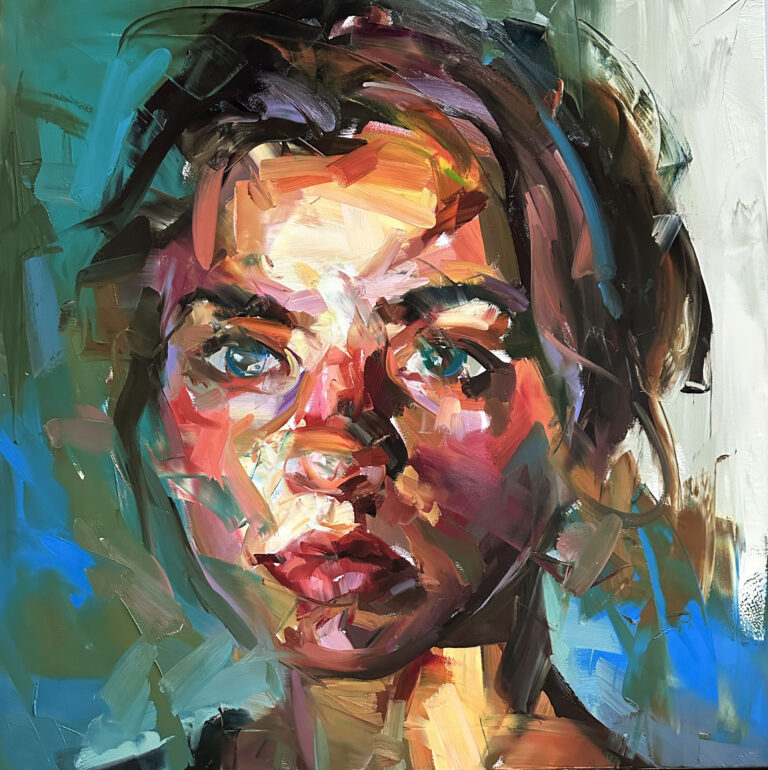

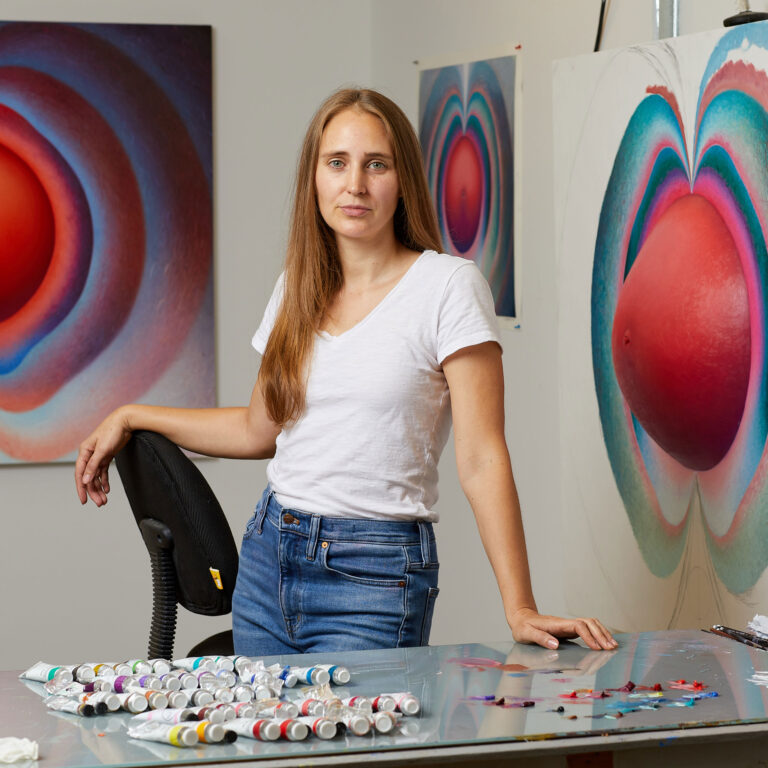
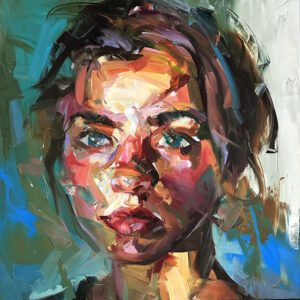
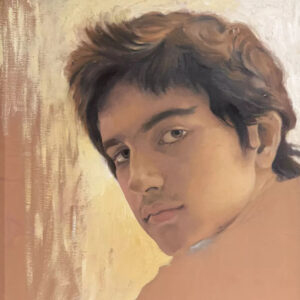
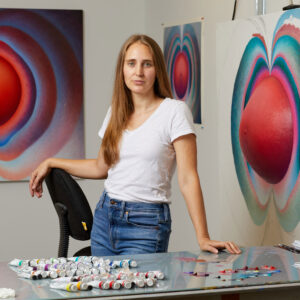



 in your life?
in your life?

